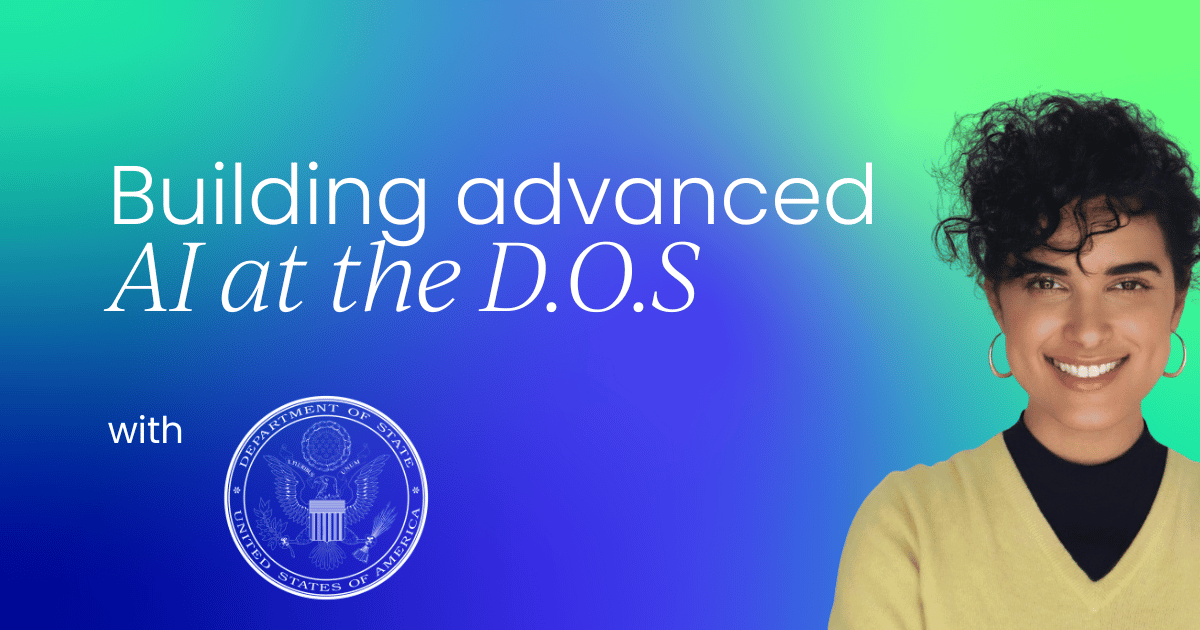

When you think of the most advanced, cutting-edge AI organizations in the world, does the U.S. State Department come to mind?
If you’re a bit skeptical, I don’t blame you. But last fall, I was at OpenAI with my team when one of their employees came up to me and said something that even I found surprising: “Of all our partners we work with, you’re one of the furthest ahead”.
I have to admit, I was a little shocked. But it’s a story I love to tell, because it perfectly captures what I want to explore today. I’m Paula Osborn, the Deputy Chief Data and AI Officer for the Department of State. I’m here to debunk the notion that the federal government is a dinosaur in the tech space – that we’re too slow, too bureaucratic, and too far behind to get anything done.
The truth is, we’re building state-of-the-art tools that have a real impact on our foreign policy and national security, and our allies now come to us to learn how we do it.
In this article, I’m going to share our journey with you. But I also want to talk about something just as important as the technology itself, that isn’t talked about nearly enough: the fact that we, as people working in the AI space, are salespeople.
If you want to get money, staff, and resources – if you want a seat in the C-suite – you need to be a salesperson for AI, and I want to show you how you can do it.
Let’s dive in.
Our journey: From crisis response to cutting-edge AI
Our story at the Center for Analytics really begins in 2020. We were a pretty new organization – we’ve since grown to over 200 employees in just five years – and for a while, we were sort of ignored.
Then, Afghanistan fell.
Suddenly, in the midst of a crisis, everyone turned to us. There was no single source of truth on how many Americans were in the country, how many were at the embassy, or how many dependents and locally employed staff we had.
The evacuation of U.S. citizens and staff was underway, and the department was relying on us because we had the skill set to make sense of the chaos. We were briefing the White House daily on how many Americans were out, where they were, and what was happening on the ground.
The White House and our department leadership were so happy with our performance that we got a little bit more budget and a few more people. That crisis was our catalyst. It proved our value and gave us the momentum we needed to grow.
With that newfound support, we moved on to our next phase: dashboards and infographics. It might sound simple, but we created these really beautiful visualizations that our leadership had never seen before.
For the first time, staff and ambassadors could get a quick snapshot of trends and key information before walking into a meeting, without having to read a 10-page paper. They were blown away, and the wide use of these dashboards got us even more money and resources.
This foundation allowed us to graduate to the next level: building AI tools and eventually, generative AI.

